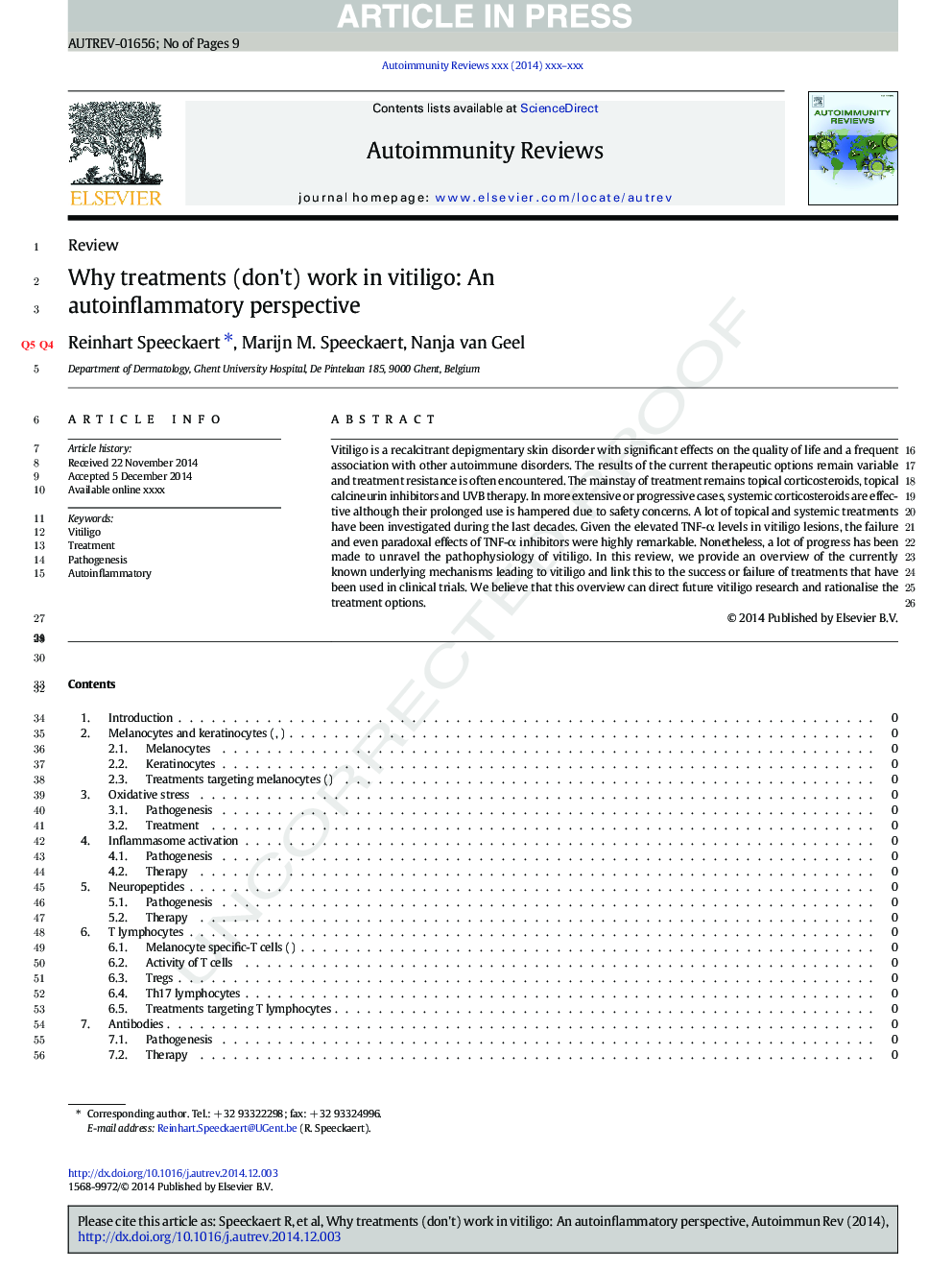| Article ID | Journal | Published Year | Pages | File Type |
|---|---|---|---|---|
| 6114455 | Autoimmunity Reviews | 2015 | 9 Pages |
Abstract
Vitiligo is a recalcitrant depigmentary skin disorder with significant effects on the quality of life and a frequent association with other autoimmune disorders. The results of the current therapeutic options remain variable and treatment resistance is often encountered. The mainstay of treatment remains topical corticosteroids, topical calcineurin inhibitors and UVB therapy. In more extensive or progressive cases, systemic corticosteroids are effective although their prolonged use is hampered due to safety concerns. A lot of topical and systemic treatments have been investigated during the last decades. Given the elevated TNF-α levels in vitiligo lesions, the failure and even paradoxal effects of TNF-α inhibitors were highly remarkable. Nonetheless, a lot of progress has been made to unravel the pathophysiology of vitiligo. In this review, we provide an overview of the currently known underlying mechanisms leading to vitiligo and link this to the success or failure of treatments that have been used in clinical trials. We believe that this overview can direct future vitiligo research and rationalise the treatment options.
Related Topics
Life Sciences
Immunology and Microbiology
Immunology
Authors
Reinhart Speeckaert, Marijn M. Speeckaert, Nanja van Geel,
